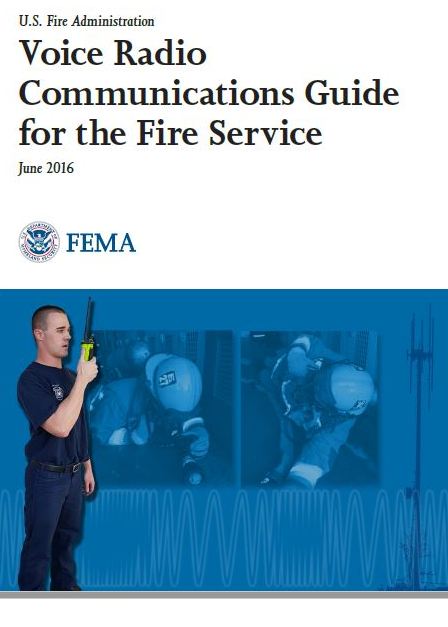https://www.dhs.gov/safecom/blog/2016/07/11/auxilliary-emergency-communications
A new Colorado law has created an Auxiliary Emergency Communications (AuxComm) Unit within the state’s Division of Homeland Security and Emergency Management (DHSEM). The law implements recommendations in a 2012 FCC report to Congress regarding amateur radio’s role in disasters and emergencies. Governor John Hickenlooper signed the measure into law on June 6, 2016.
Colorado’s General Assembly determined “a uniformly trained and credentialed unit of communication volunteers available for disaster response” would “materially assist emergency preparedness and disaster response efforts across the state.” “While maintaining their traditional roles as Amateur Radio operators, many of these volunteers assist with the establishment and maintenance of communication facilities, assist with programming public safety radios during emergencies, and act as radio operators on public safety channels,” the bill says in its findings.
Colorado Section Emergency Coordinator and State Government Liaison Robert Wareham, N0ESQ, an attorney, conceived this law while he met with DHSEM staff after completing the Office of Emergency Communications (OEC) Auxiliary Emergency Communications course in 2012. In 2012 and 2013, Colorado amateur radio operators played key roles in responding to major disasters in Colorado, including wildfires that destroyed several hundred homes and a 500-year-flood that inundated much of north-central Colorado.
While the new law is clear that the unit is comprised of unpaid amateur radio volunteers, it authorizes reimbursement of their reasonable and necessary expenses. It also broadens the circumstances under which any disaster volunteer could receive Workmen’s Compensation benefits and tort immunity in Colorado. “This statute puts volunteer Amateur Radio operators on an equal footing with volunteer firefighters and other rescue workers with respect to legal benefits and protections,” American Radio Relay League (ARRL) Rocky Mountain Division Vice Director Jeff Ryan, K0RM, said. This new Colorado law can be found here.
Amateur Radio Recognition Week
Besides Colorado, seven other states proclaimed the week of June 20 as a time to recognize amateur radio as a communications resource that can be used during national, state and local emergency, and for community/public type events. These states include: Michigan, Minnesota, Missouri, Oklahoma, New Mexico, Texas and Florida. Here are a few of the governors’ remarks:
Michigan: Governor Rick Snyder cited Amateur Radios voluntary community service and its role in emergencies and disasters.
Minnesota: Governor Mark Dayton proclaimed that during times of national, state, and local emergency, and for community and public events, amateur radio operators have provided communications resources at no cost.
Texas: Governor Rick Scott said that amateur radio provides a critical communication link in the event of a disaster and recognizes the support Florida radio amateurs provide in times of emergencies.
DHS Office of Emergency Communications: AUXCOMM
“AUXCOMM” is an umbrella term and acronym for “auxiliary communications.” It was developed by OEC in 2009 with the assistance of amateur radio subject matter experts. The concept behind the acronym was to educate as many amateur radio entities to work and train with public safety personnel, understand the value of the National Incident Management System (NIMS) Incident Command System (ICS) concept and the role of the communications unit leader (COML). AUXCOMM, although not an official national ICS position as of yet, is most often identified as a Technical Specialist (THSP) in the Communications Unit of the NIMS ICS structure. A few states have endorsed AUXCOMM as an official position within their state NIMS/ICS structure. The process on how this can be accomplished is described in the FEMA NIMS: Guidelines for the Credentialing of Personnel, August 2011 and FEMAs Type 3 All-Hazard Incident Management System Qualification Guide, dated September 2010.
OEC subsequently developed the AUXCOMM technical assistance workshop and produced the Auxiliary Field Operators Guide. This guide and other OEC products are available at http://www.publicsafetytools.info/. The TRG-AUXCOMM (again, another Federal acronym for the course designator) is designed to educate amateurs and state officials involved with volunteer groups they could expect in an emergency operations center environment. The AUXFOG is a reference guide for the amateur radio emergency communications community. To date, the OEC AUXCOMM course has been taught 105 times with over 1,300 amateur radio operators trained.
Note: Some of the details in this article have been adopted from the ARRL E-Letter, found at http://www.arrl.org/news-features.
Further reading: More information about amateur radio support to public safety can be found in the following articles:
• ARRL E-Letter, 15 June 2016, “Before Deployment: Personal, Family Safety First”
• ARRL E-Letter, 9 June 2016, “Colorado Creates Auxiliary Emergency Communications Unit”
• AUXCOMM – Intense Training for Serious Disasters, QST Article dated May 2016
• QST Article, ARES in the Classroom: DHS Auxiliary Emergency Communications Course, dated July 2013, page 79
• AUXFOG Book Review from the ARRL: www.arrl.org/ares-el?issue=2014-03-19#toc07


